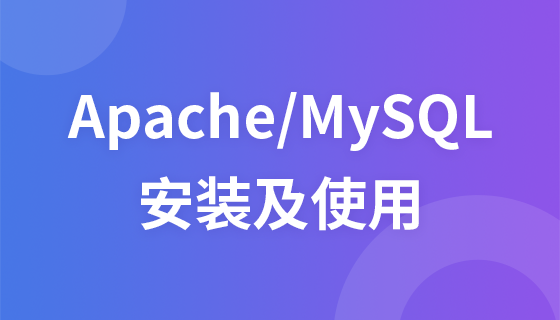
本文档旨在指导开发者如何使用 JSch 库从运行在移动设备上的 SSHD 服务器下载文件到另一个移动设备。由于移动网络环境的特殊性,直接通过移动网络连接可能会遇到问题,本文将重点介绍在 Wi-Fi 环境下的解决方案,并提供详细的代码示例和注意事项,帮助开发者成功实现文件传输。
由于大多数移动运营商会阻止传入连接,因此直接通过移动网络将移动设备用作服务器通常不可行。因此,建议在 Wi-Fi 环境下进行测试和开发。
以下代码展示了如何使用 JSch 库连接到 SSHD 服务器并下载文件。
import com.jcraft.jsch.*;
public class Client {
private static final String USERNAME = "sftptest"; // 替换为你的用户名
private static final String PASSWORD = "sftptest"; // 替换为你的密码
private static final String REMOTE_HOST = "192.168.1.100"; // 替换为你的服务器 IP 地址
private static final int REMOTE_PORT = 8888; // 替换为你的服务器端口
private static final int SESSION_TIMEOUT = 10000;
private static final int CHANNEL_TIMEOUT = 5000;
public void startClient() {
String localFile = "/sdcard/download/au.au_1"; // 客户端保存文件的路径,确保有写入权限
String remoteFile = "/data/user/0/com.open.androidsshd/databases/au.au_1"; // 服务端文件路径
Session jschSession = null;
try {
JSch jsch = new JSch();
// jsch.setKnownHosts("/home/mkyong/.ssh/known_hosts"); // 可选:如果需要验证主机密钥
jschSession = jsch.getSession(USERNAME, REMOTE_HOST, REMOTE_PORT);
// authenticate using private key
// jsch.addIdentity("/home/mkyong/.ssh/id_rsa");
// authenticate using password
jschSession.setPassword(PASSWORD);
// 忽略主机密钥检查(仅用于测试环境,生产环境不建议)
java.util.Properties config = new java.util.Properties();
config.put("StrictHostKeyChecking", "no");
jschSession.setConfig(config);
System.out.println("Establishing connection");
// 10 seconds session timeout
jschSession.connect(SESSION_TIMEOUT);
Channel sftp = jschSession.openChannel("sftp");
// 5 seconds timeout
sftp.connect(CHANNEL_TIMEOUT);
ChannelSftp channelSftp = (ChannelSftp) sftp;
// transfer file from local to remote server
//channelSftp.put(localFile, remoteFile);
// download file from remote server to local
channelSftp.get(remoteFile, localFile);
System.out.println("got the file");
channelSftp.exit();
} catch (JSchException | SftpException e) {
e.printStackTrace();
} finally {
if (jschSession != null) {
jschSession.disconnect();
}
}
}
public static void main(String[] args) {
Client client = new Client();
client.startClient();
}
}注意事项:
权限: 确保客户端应用具有读取和写入外部存储的权限。在 AndroidManifest.xml 文件中添加以下权限声明:
<uses-permission android:name="android.permission.READ_EXTERNAL_STORAGE" /> <uses-permission android:name="android.permission.WRITE_EXTERNAL_STORAGE" /> <uses-permission android:name="android.permission.INTERNET"/>
同时,在运行时请求这些权限。
依赖: 确保你的项目中包含了 JSch 库。你可以在 build.gradle 文件中添加以下依赖:
implementation 'com.jcraft:jsch:0.1.55'
主机密钥验证: 在生产环境中,强烈建议启用主机密钥验证,以防止中间人攻击。 你可以使用 jsch.setKnownHosts() 方法设置已知主机文件。
IP 地址: 确保客户端和服务器在同一个 Wi-Fi 网络下,并且客户端可以使用服务器的 IP 地址访问它。
路径: 确保客户端和服务端的文件路径正确。
异常处理: 完善异常处理,例如处理连接超时、认证失败等情况。
以下代码展示了如何在移动设备上运行一个简单的 SSHD 服务器。
import org.apache.sshd.server.SshServer;
import org.apache.sshd.server.keyprovider.SimpleGeneratorHostKeyProvider;
import org.apache.sshd.server.subsystem.sftp.SftpSubsystemFactory;
import org.apache.sshd.server.command.ScpCommandFactory;
import org.apache.sshd.server.shell.EchoShellFactory;
import org.apache.sshd.server.auth.password.PasswordAuthenticator;
import org.apache.sshd.server.session.ServerSession;
import org.apache.sshd.common.NamedFactory;
import org.apache.sshd.server.command.Command;
import java.io.IOException;
import java.util.Arrays;
public class Server {
public static void main(String[] args) throws IOException {
int port = 8888;
SshServer sshd = SshServer.setUpDefaultServer();
sshd.setPort(port);
sshd.setKeyPairProvider(new SimpleGeneratorHostKeyProvider("hostkey.ser")); // 替换为你的密钥文件
sshd.setSubsystemFactories(Arrays.<NamedFactory<Command>>asList(new SftpSubsystemFactory()));
sshd.setCommandFactory(new ScpCommandFactory());
sshd.setShellFactory(new EchoShellFactory()); // necessary if you want to type commands over ssh
sshd.setPasswordAuthenticator(new PasswordAuthenticator() {
@Override
public boolean authenticate(String u, String p, ServerSession s) {
return ("sftptest".equals(u) && "sftptest".equals(p));
}
});
try {
sshd.start();
System.out.println("SSHD Server started on port " + port);
} catch (IOException e) {
e.printStackTrace();
}
}
}注意事项:
依赖: 确保你的项目中包含了 Apache SSHD 库。 你可以在 pom.xml (如果使用 Maven) 或 build.gradle (如果使用 Gradle) 文件中添加以下依赖。 请注意,这里使用的是 Maven 格式,Gradle 格式请自行转换。
<dependency>
<groupId>org.apache.sshd</groupId>
<artifactId>sshd-core</artifactId>
<version>2.9.2</version> <!-- 使用最新版本 -->
</dependency>密钥生成: 使用 SimpleGeneratorHostKeyProvider 生成主机密钥。 在实际部署中,应该使用更安全的密钥管理方案。
身份验证: 使用 PasswordAuthenticator 进行密码身份验证。 在实际部署中,应该考虑使用更安全的身份验证方式,例如公钥身份验证。
端口: 确保防火墙没有阻止 SSHD 服务器使用的端口。
线程: 确保在单独的线程中运行 SSHD 服务器,以避免阻塞主线程。
本文介绍了使用 JSch 库从运行在移动设备上的 SSHD 服务器下载文件到另一个移动设备的方法。 由于移动网络的限制,建议在 Wi-Fi 环境下进行测试和开发。 通过提供详细的代码示例和注意事项,希望能够帮助开发者成功实现文件传输功能。 记住,安全性至关重要,在生产环境中,请务必采取适当的安全措施,例如启用主机密钥验证和使用更安全的身份验证方式。
以上就是使用 JSch 从 SSHD 服务器下载文件:移动端到移动端方案的详细内容,更多请关注php中文网其它相关文章!

每个人都需要一台速度更快、更稳定的 PC。随着时间的推移,垃圾文件、旧注册表数据和不必要的后台进程会占用资源并降低性能。幸运的是,许多工具可以让 Windows 保持平稳运行。




Copyright 2014-2025 https://www.php.cn/ All Rights Reserved | php.cn | 湘ICP备2023035733号